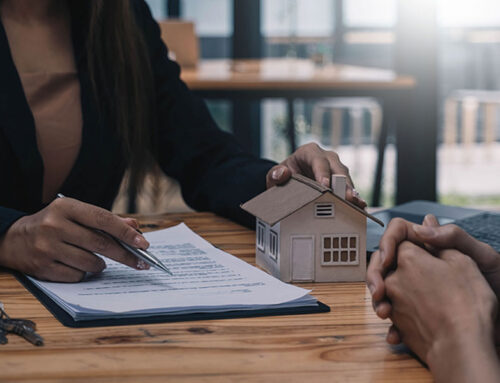When I first moved out of my parent’s house, I had $400 a month in my budget for rent. And even though that was many, many years ago, it didn’t get me very far. I ended up sharing a tiny, broken-down house with my two best friends in the heart of one of the “worst” neighborhoods in the city.
Houses across the street would stand vacant for years. Houses next to us were broken into multiple times. But we loved our neighbors and we loved the location; it had personality. Still, we all moved out the second we got better-paying jobs. Most people did, actually, even those who had grown up there.
When I started investing in real estate, that neighborhood was the first one I visited. I knew that with a little money and a lot of work, I could make a real difference in the community I had grown to love.
Flipping houses in bad neighborhoods inherently comes with risks and rewards. Of course, all flipping does. If you’re flipping a house in a bad neighborhood, you have to understand the unique challenges you’ll face. You also need to go into flipping for the right reasons.
A bad neighborhood is a multi-faceted problem. Once a neighborhood reaches that point, not many people want to live in it anymore. The people who grew up there may even start looking for any opportunity to leave. It becomes a self-fulfilling prophecy, but if enough people take the initiative, they can break that cycle. Still, flipping houses isn’t charity. Let’s take a realistic look at some of the risks you might face—and the rewards that just might make them worth it.
Top 3 Risks and Rewards of Flipping Houses in Bad Neighborhoods
1. Risk: Pricing a House out of the Neighborhood
You’ve flipped a $50,000 house and now it’s “worth” $175,000. There’s only one problem: All the other houses in the neighborhood are going for $100,000. What do you do? Ideally, you’d want to go back in time and make wiser decisions!
When flipping houses in bad neighborhoods, you have to be realistic about what a property can sell for. If the neighborhood has some new benefits coming (such as a recent development nearby), you may be able to push the price point a little higher up.
But don’t assume that you can overcome neighborhood comps through renovations alone. If you’re in a neighborhood with a $100,000 price point, look to bring a $25,000 house to $100,000—not a $80,000 house to $150,000.
Reward: Getting a Great Deal in an Up-and-Coming Area
Because many people are hesitant to purchase houses in bad neighborhoods, it’s easy to get a deal—especially if a house has a lot of cosmetic damage or is in dire need of an update. In fact, there are city programs that may even provide you with a renovation loan or renovation grants.
Many neighborhoods are in a transitional phase. Though the houses may currently be affordable, others are noticing and moving in. If you can take advantage of a similar situation, you may be able to snag a great property to renovate for the right buyer.
2. Risk: Crimes During the Process of Renovation
Under the broken windows theory, people are more likely to break into houses and vandalize them if there are signs of crime nearby. If you’re renovating a property in a bad neighborhood, it’s possible that materials could get stolen or the property itself could be damaged.
Insurance can mitigate at least some of these risks; there are policies designed specifically for investors. But you still need to be vigilant. Keep the house brightly lit, install a temporary security system, and be aware of the potential dangers. Lock up any equipment you need to leave behind and make sure nothing too expensive is ever left on site.
Reward: Improving a Community for Those Who Live In It
House flipping doesn’t have to entail gentrification. One of the major benefits of house flipping is that you can improve the community for those who already live there. You are providing excellent housing stock for them to purchase, improving their property values, and increasing the safety and desirability of the area.
And sure, some new people will be moving into the neighborhood, but that’s natural and normal. On the flip side, people who already live there won’t be looking to leave.
3. Risk: Not Being Able to Procure Financing
If you’re working with alternative lending, such as hard money lenders, you may not receive the financing you need in a high-risk area. Further, conventional lenders may not want to invest in the flip; they may want the property to be in a livable condition before they back the loan.
You may need to finance your own rehabs if you’re purchasing in a bad neighborhood. But because the properties are likely to be less expensive, this may not be as big of a problem as it initially seems.
Reward: You Can Help First-Time Home Buyers
With property values rising as fast as they are, the “starter home” has essentially gone extinct. Many first-time homebuyers are seeing their dreams of homeownership melt away. But when you take an affordable house in a bad neighborhood and fix it up, you can sell it at a price that works for them—and you can help people get into the housing market who would never have otherwise had the chance to.
I flip houses as a business. I do it for a living, but I also believe in it. I believe that everyone should do as much good as they can with their work. Reconditioning old, undesirable housing stock into beautiful homes for first-time homebuyers is something that I truly believe in.
With a HomeVestors Franchise, You Can Start Flipping Today
Should you get started by flipping houses in bad neighborhoods? Well, it depends on many things, but for me personally it was full of rewards. I got to see a neighborhood that I loved revitalized from the ground up. Every passing year, I see it getting better—it’s a labor of love.
But it also comes with risks. If you want to learn how to flip houses, there are a lot of bases to cover: You need to get financing, get training, start networking, and find mentors. A bad neighborhood will let you get started with less cash in your pocket, but you also need to protect yourself against property damage and crime.
For me, becoming an independently owned and operated HomeVestors® franchisee checked a lot of those boxes. HomeVestors® provides some of the best essentials you need to start flipping houses, including great training, mentorship, and tools. You can find out more about the process of flipping houses, and decide whether bad neighborhoods are the right option for you or not, and how to properly assess risks.
Looking to turn a bad neighborhood around through the power of house flipping? Contact us to get started!
Each franchise office is independently owned and operated.
Contact
"*" indicates required fields







